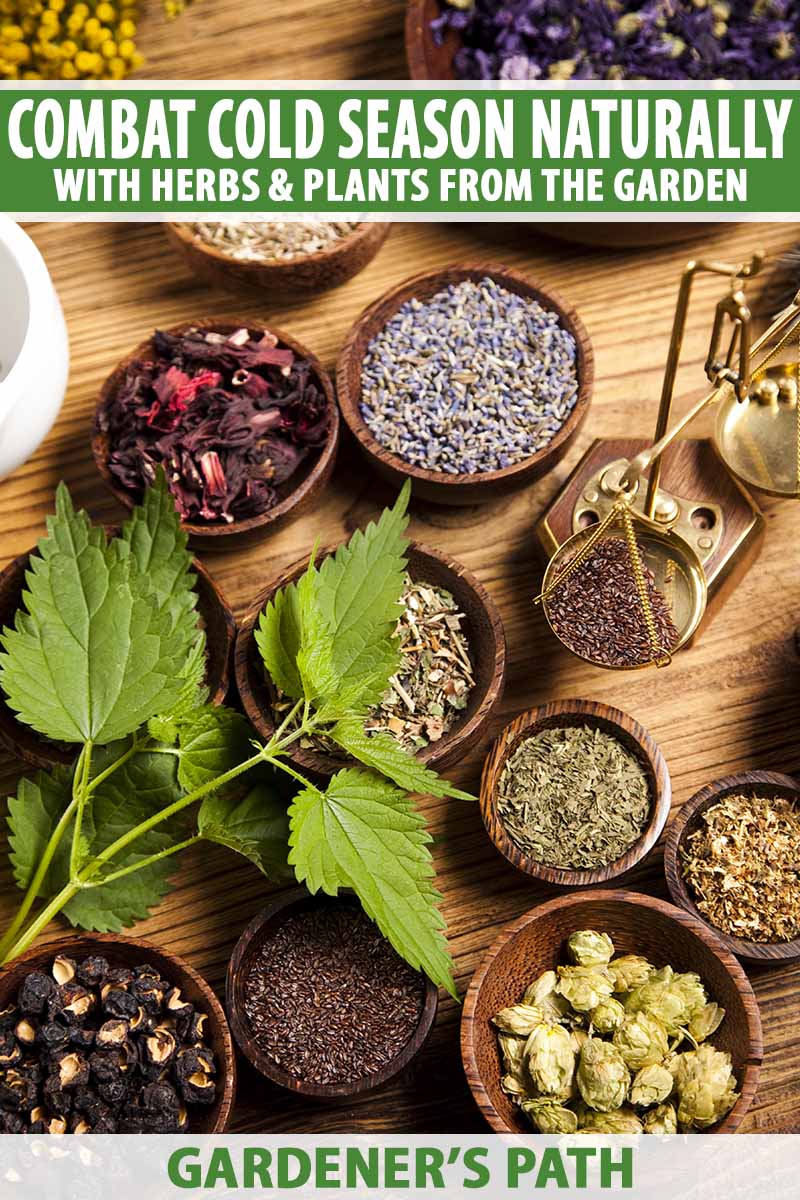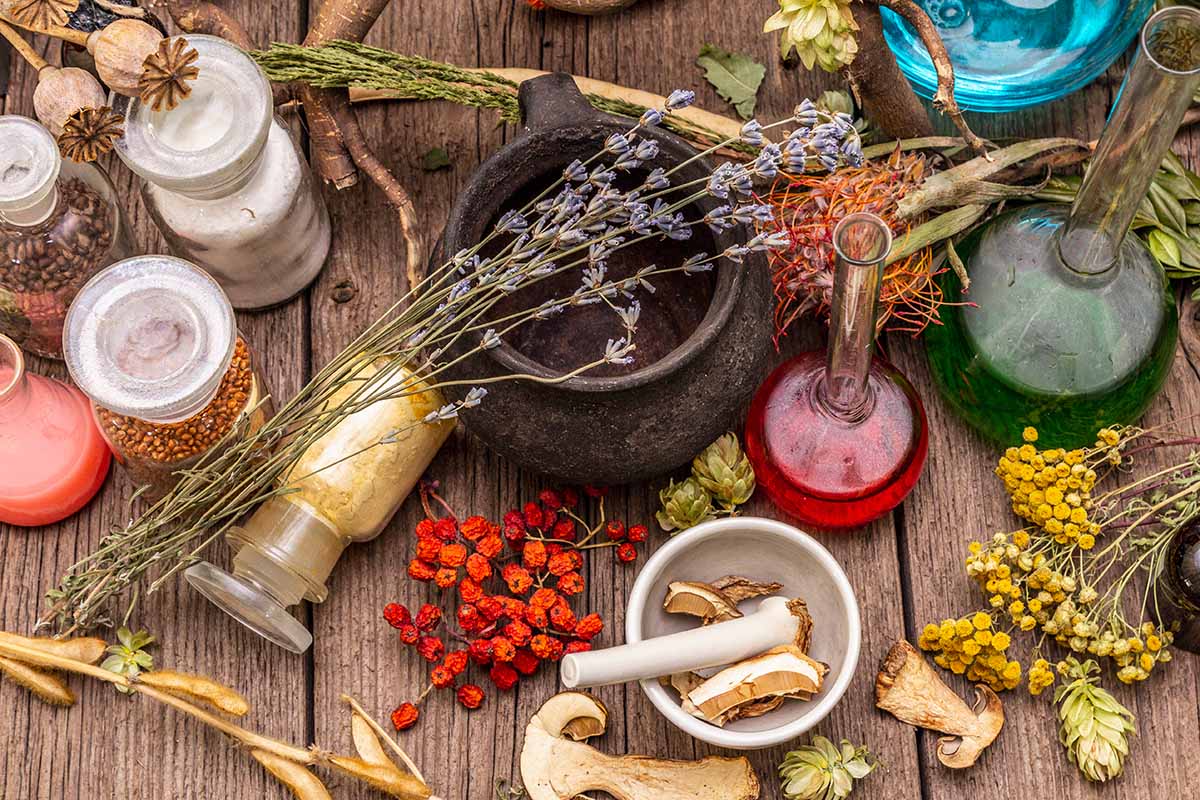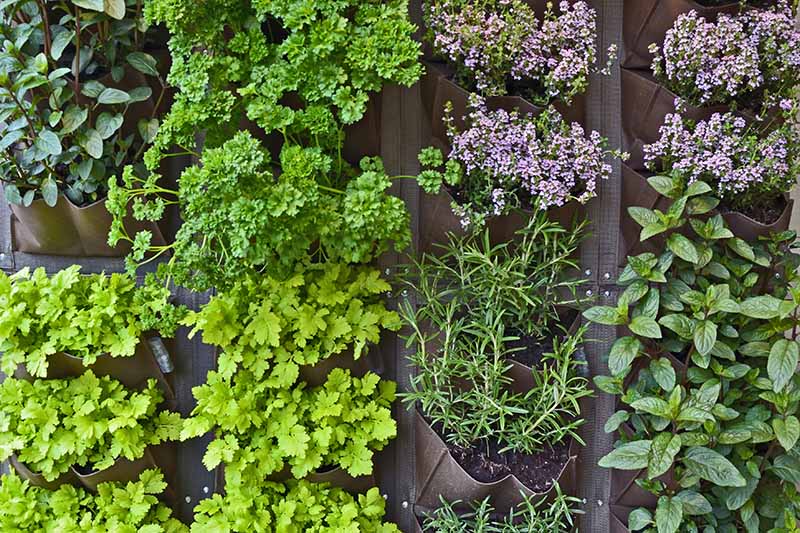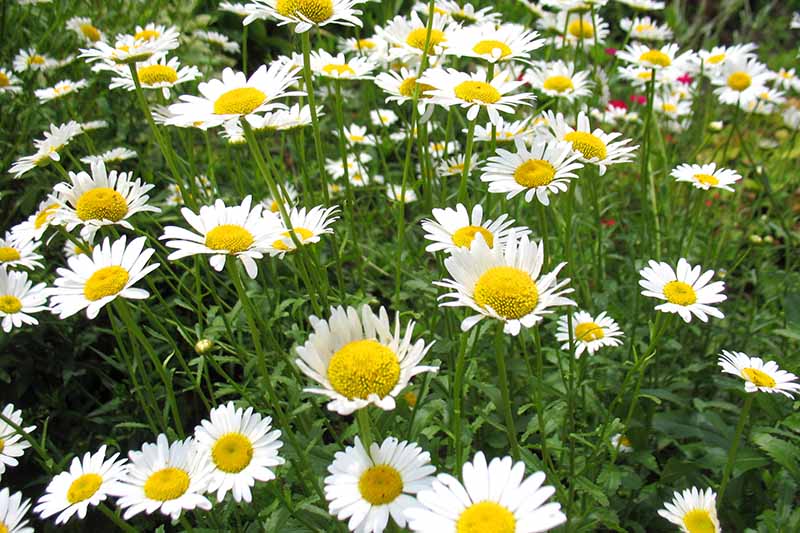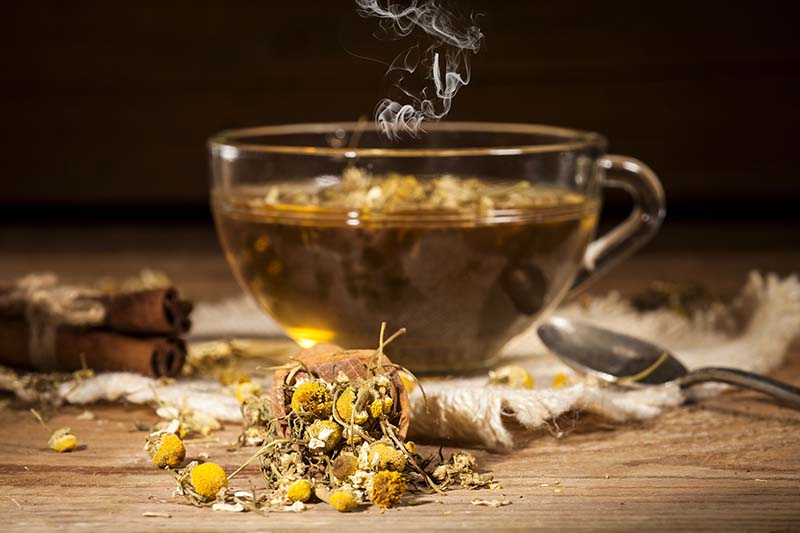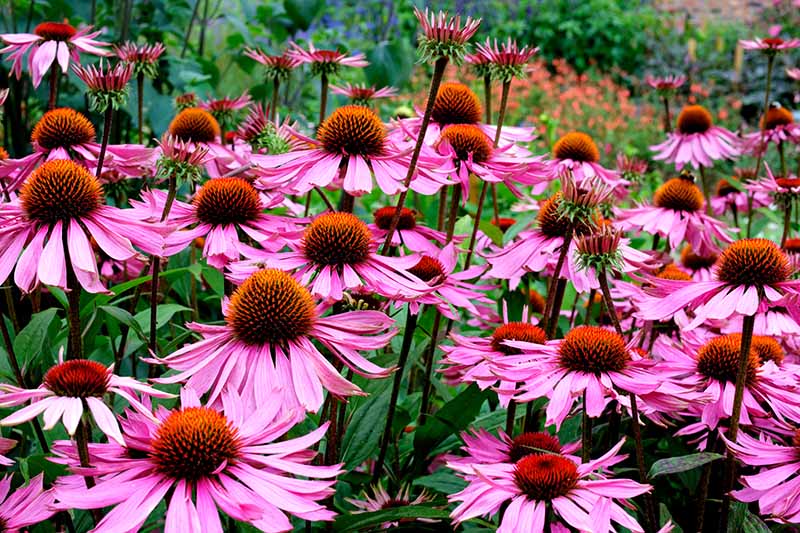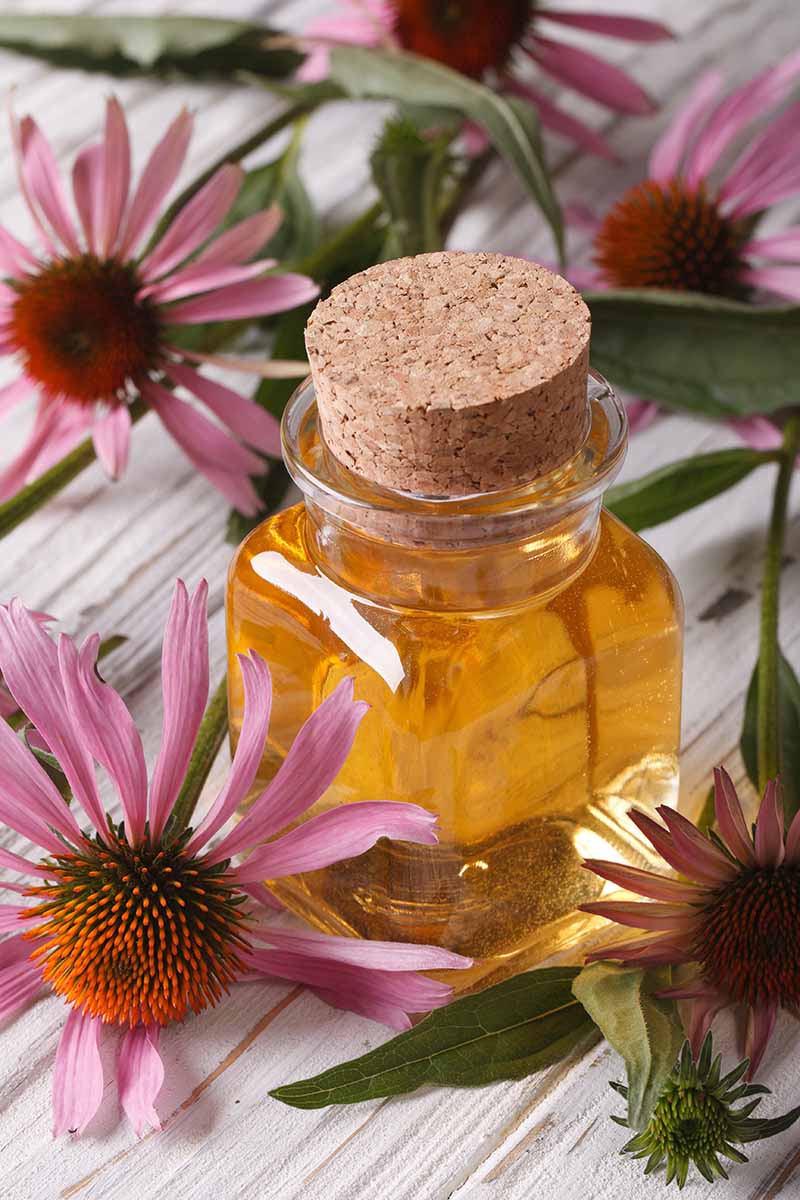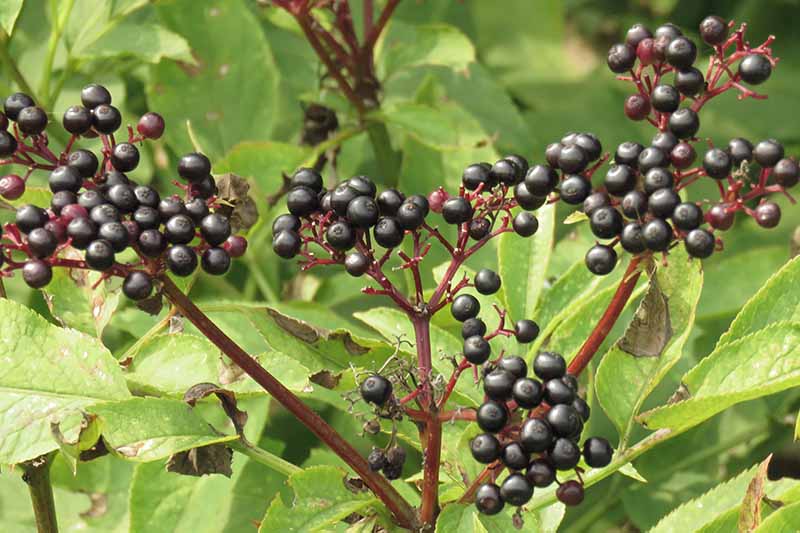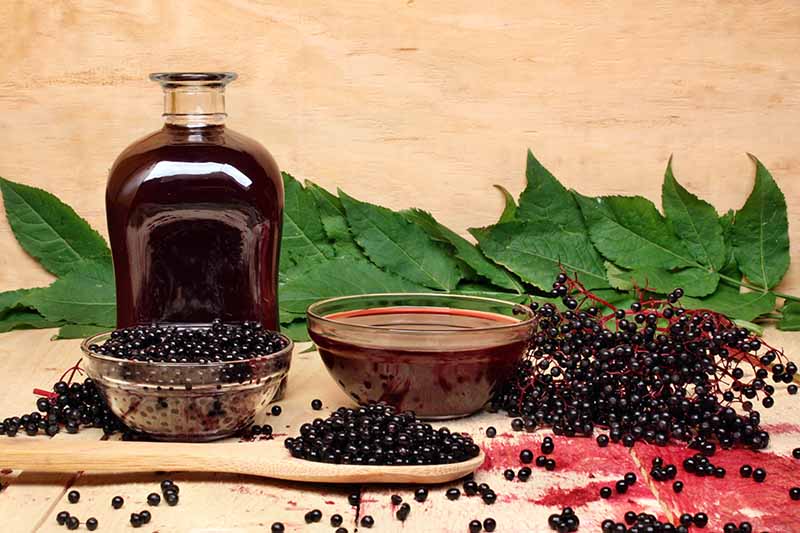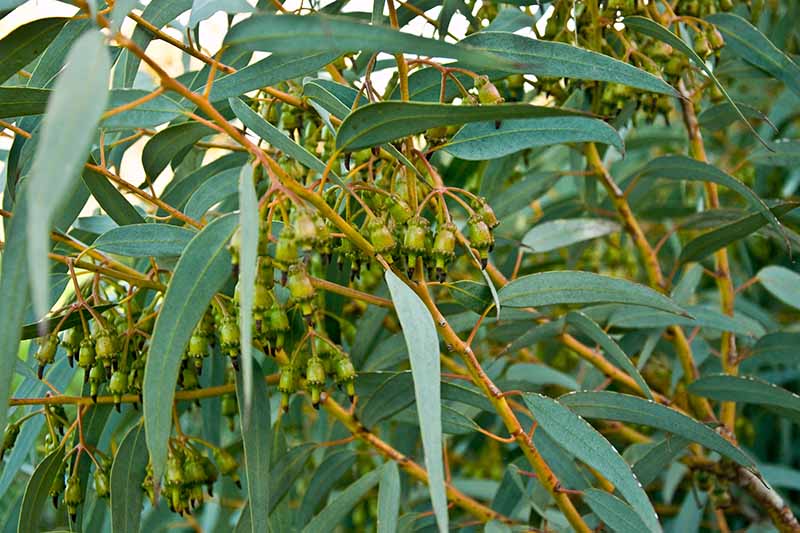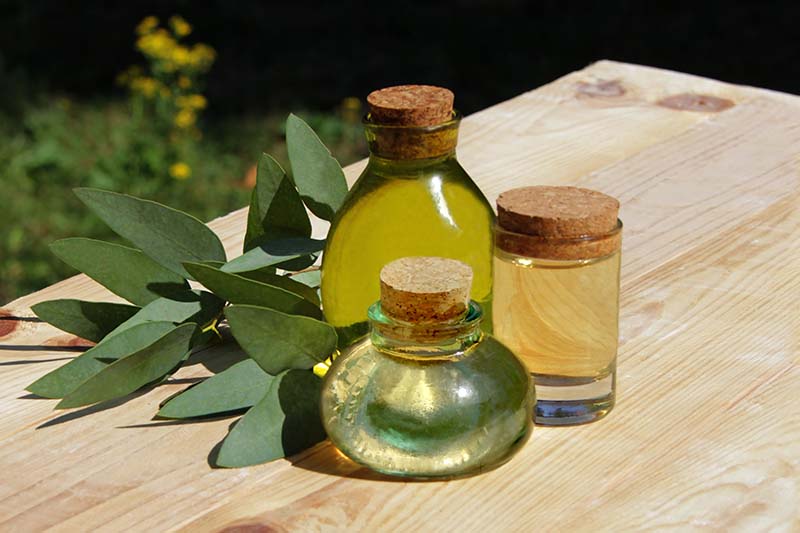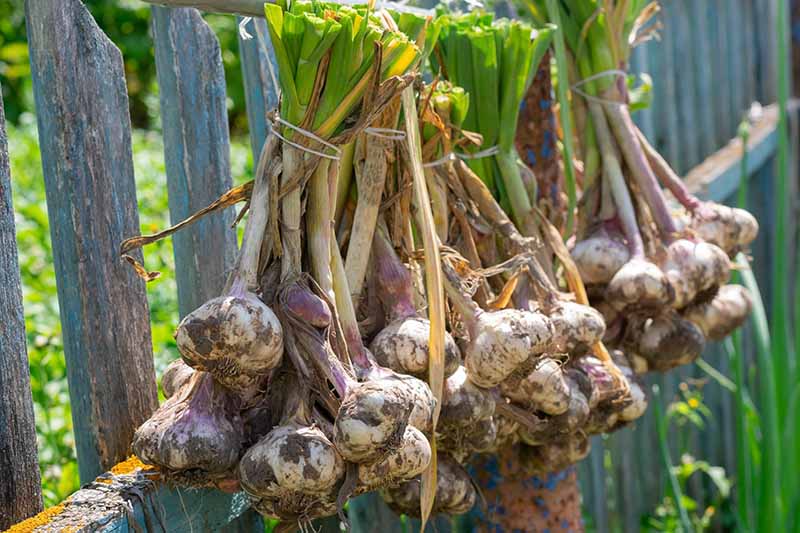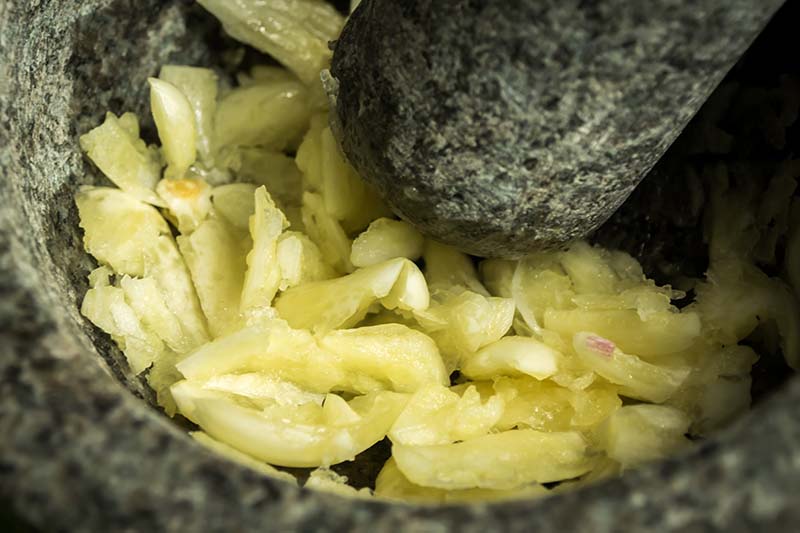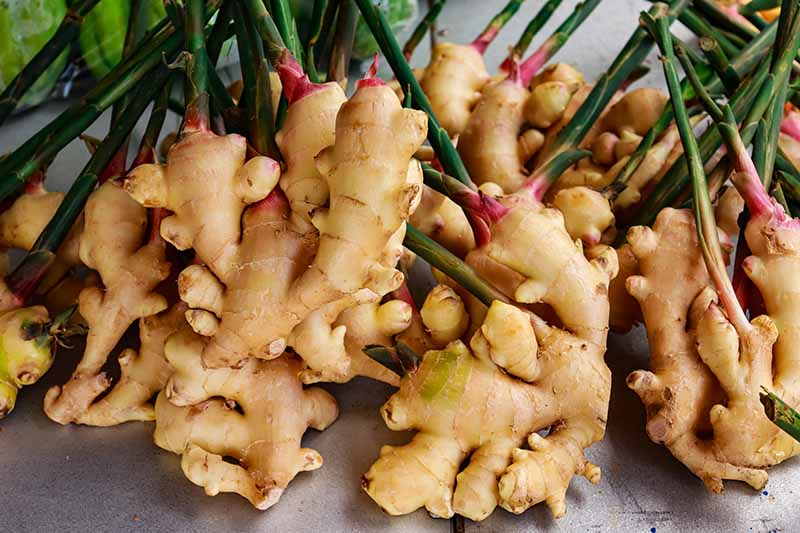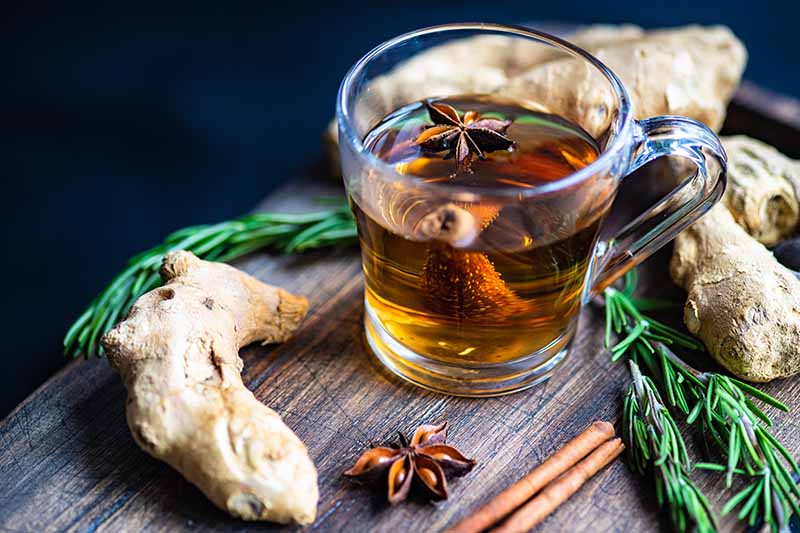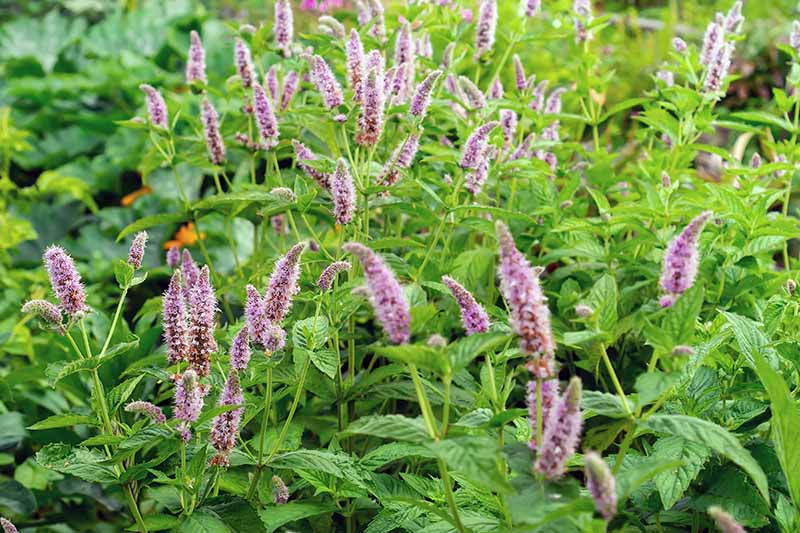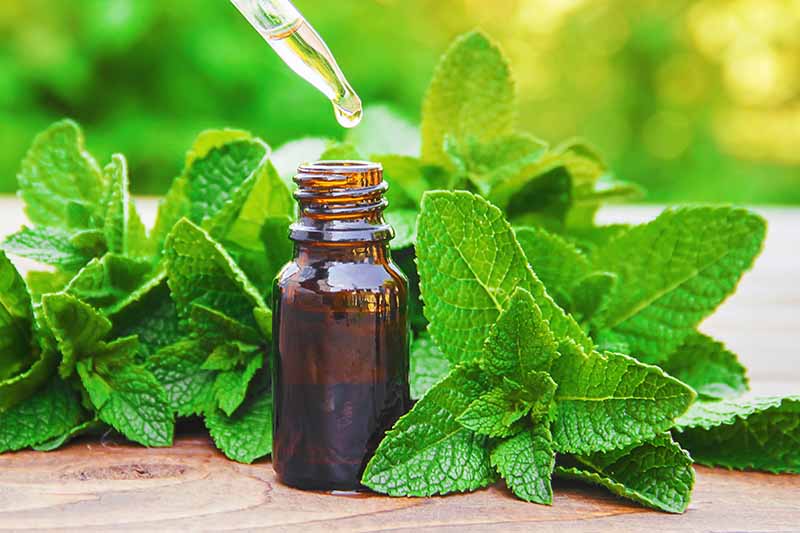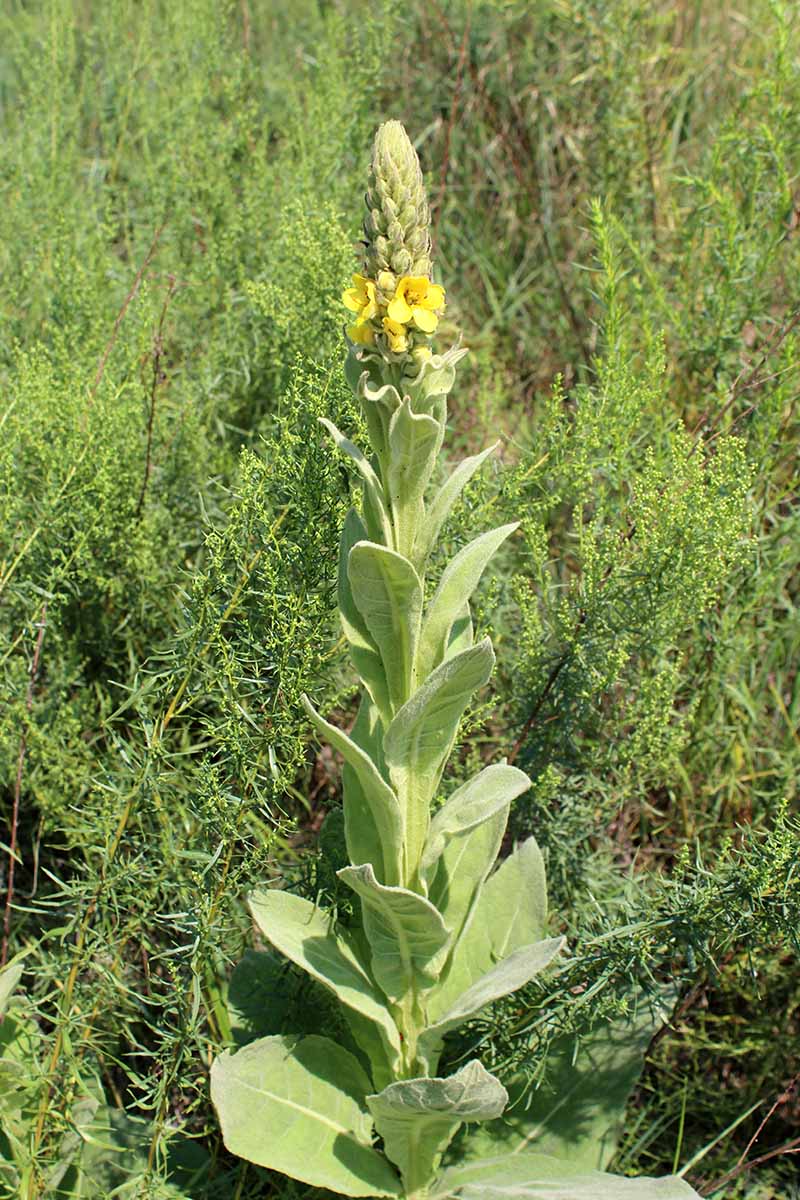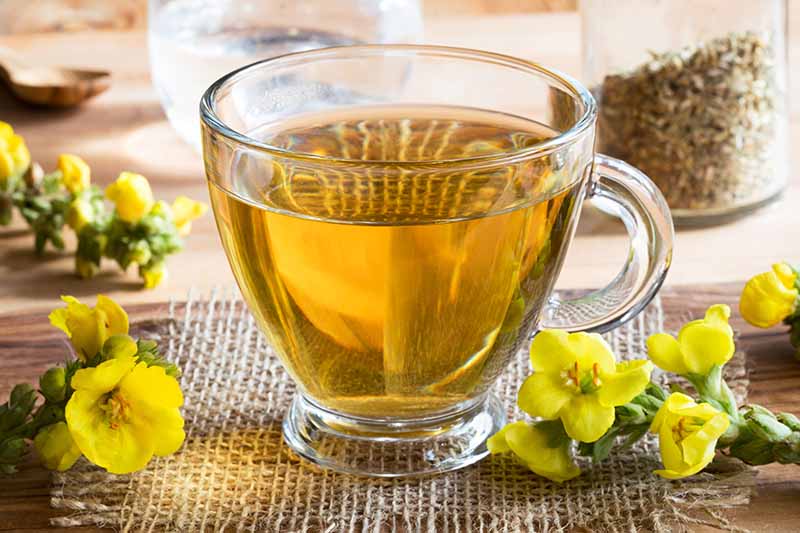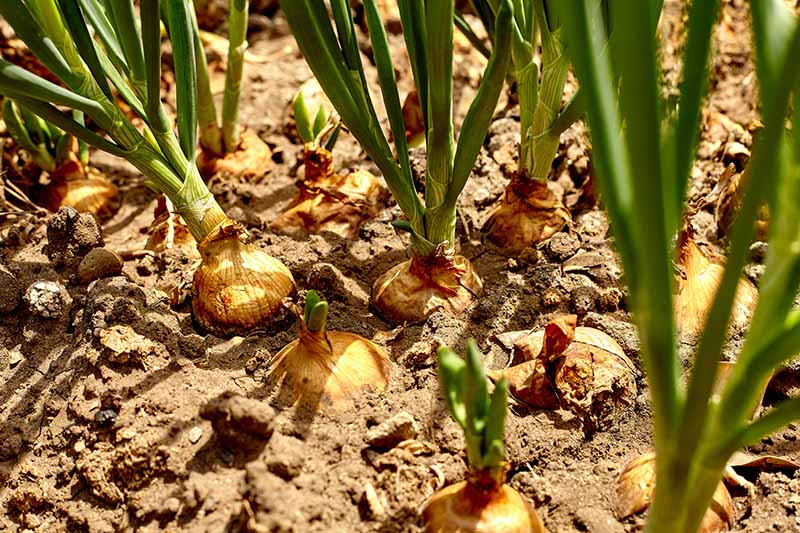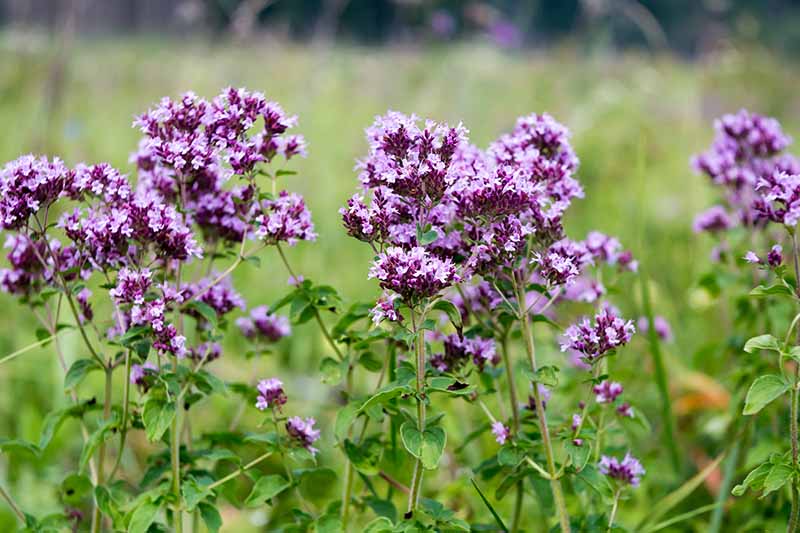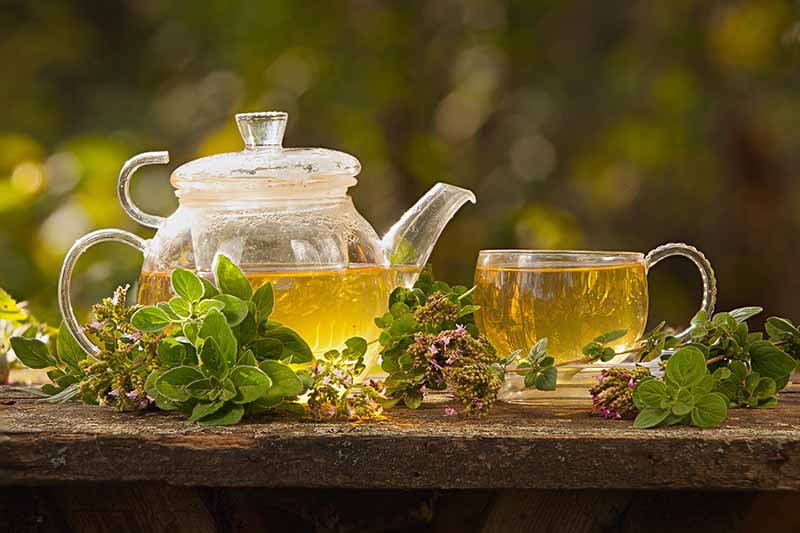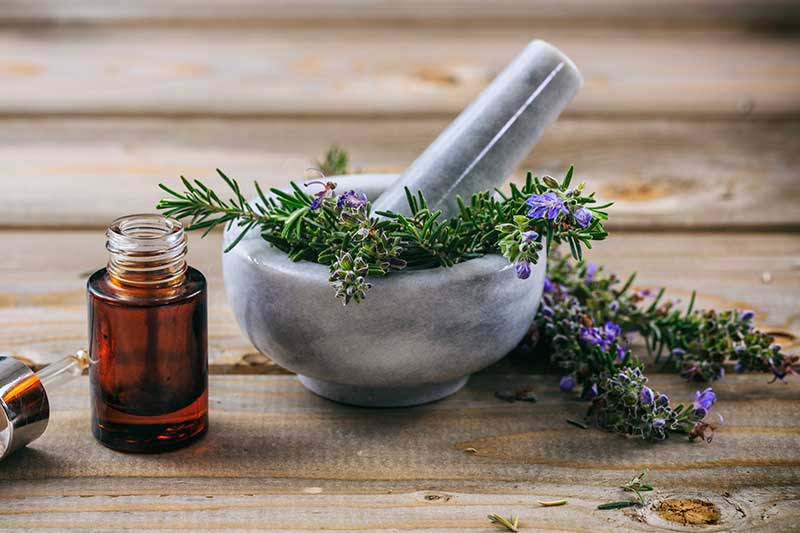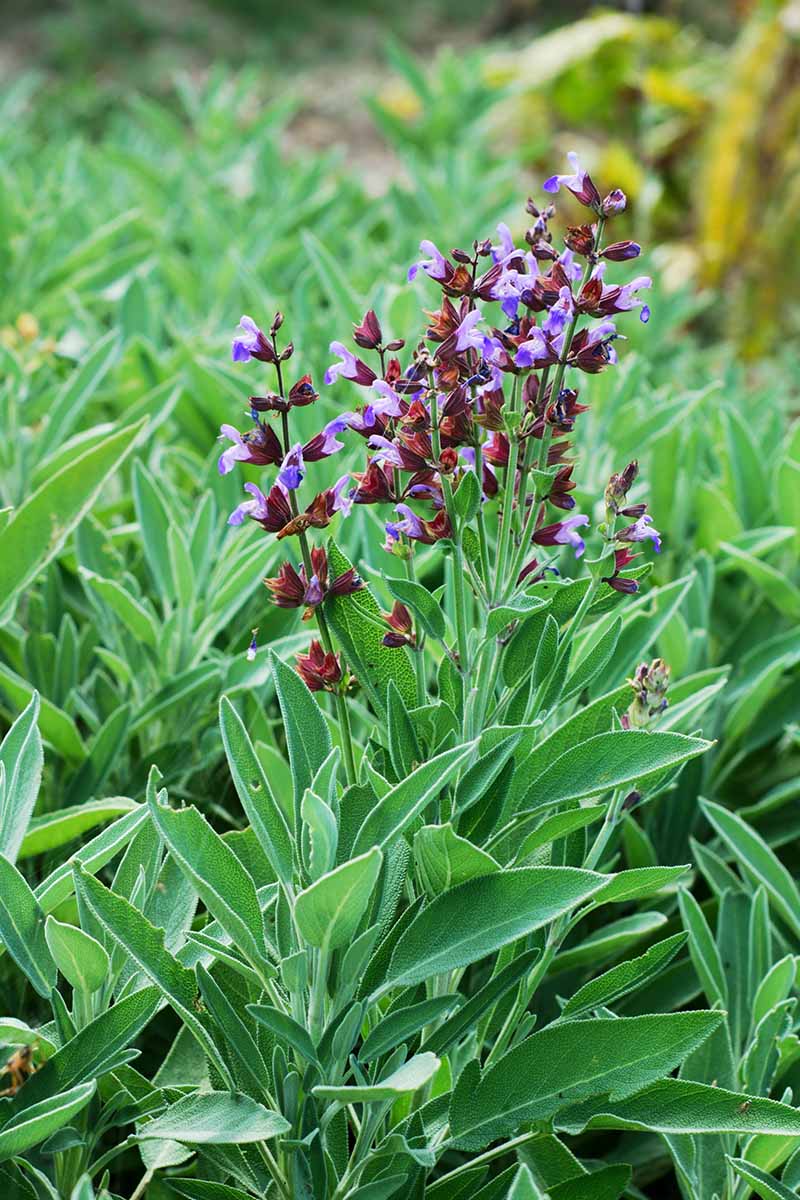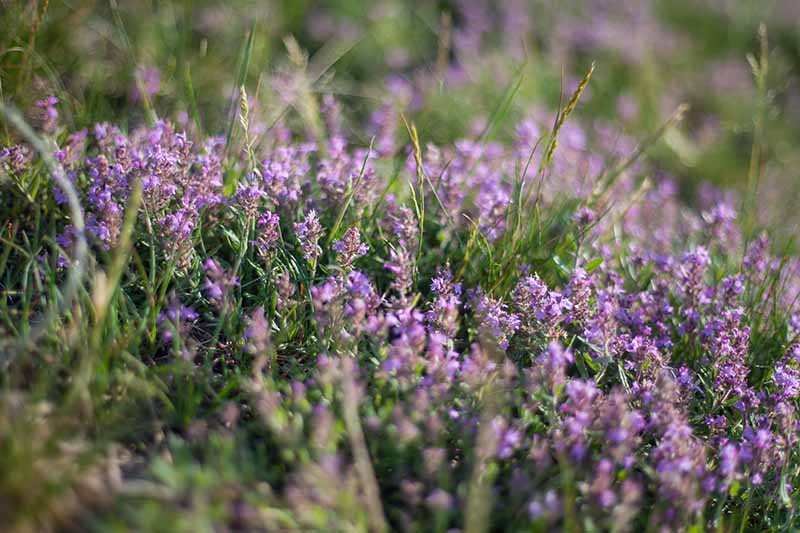Science has yet to find a cure for the common cold. But nature provides us with plenty of ingredients to help alleviate our suffering – with wholesome, natural ingredients right from the garden. Many herbs are being studied today for their healing properties, but generally remain untested or require more research to satisfy scientific standards. But we do know from many recipes that have withstood the test of time, and anecdotal evidence, that they may help to soothe symptoms of achiness, congestion, coughs, and more. And the popularity of plant-based potions like herbal teas, infusions, tinctures, and poultices continues to grow today. We link to vendors to help you find relevant products. If you buy from one of our links, we may earn a commission. Sound like something you could use a dose of? Then let’s jump in and look at the plant favorites for cold and flu relief.
Attack of the Killer Germs
It isn’t actually germs that cause the symptoms we associate with a cold or flu. They’re created by our body’s immune system, in response to a viral infection of the upper respiratory system. The aches, congestion, fever, and runny nose are all the result of our immune response. When infected, mucous membranes kick into high gear to flush unfriendly bugs from our systems, and to inhibit their growth and spread. And the faster this can happen, the sooner we feel better. When we’re feeling under the weather, many of us will turn to over-the-counter medicines, like decongestants. And while they do help to dry up the flow of phlegm and mucous, they also inhibit the natural flushing action that cold symptoms produce, which can make us suffer for longer than is necessary. Enter: friendly herbs from the garden.
13 Herbal Medicinals
In recent years, scientific researchers have started to look closer at many plant compounds for beneficial solutions to seasonal ailments as well as chronic diseases. Not surprisingly to the herbalist, numerous flowers, fruits, herbs, and vegetables have been found to contain powerful antifungal, antibacterial, antimicrobial, and antiviral properties. They also feature important nutrients, such as antioxidants, vitamins, and a host of phytochemicals that help to boost the immune system – which can help us to stay healthy in the first place. So, it makes sense that many of these components might also bring effective, soothing comfort to the cold sufferer. Many medicinal plants are wonderfully easy to grow right in your own backyard. And not just for medicinal purposes – they also have pretty flowers, delightful fragrances, and serve to attract pollinators while adding flavor and fragrance in the kitchen as well. If you’re new to growing healing plants, I suggest you pick up a good reference book. One that outlines growing habits, cultivation, and harvesting, as well as therapeutic uses and cautions, will be a boon to your home library. One of my favorites is National Geographic’s “Guide to Medicinal Herbs.” Thoroughly researched and educational, it includes “Over the (Kitchen) Counter” home remedies, and a fun timeline that gives interesting tidbits on the historical usage for each plant. Guide to Medicinal Herbs Note that some herbs can cause allergic reactions or react with prescribed medications and shouldn’t be taken in clinical doses by pregnant women. Please consult with your health care practitioner before starting any herbal supplement regime. Now, let’s get into those plant-based medicinals.
1. Chamomile
With charming daisy-like flowers and a sweet apple scent, chamomile is beloved by gardeners and herbalists alike. Native to Asia and Europe, the most popular variety used for tea and herbal blends is German chamomile, Matricaria chamomilla. Introduced to North America in the 1500s, it’s a mid-sized specimen popularly used in beds and borders. It’s also used as an effective companion plant for apple and fruit trees, Brassica veggies, beans, cucumbers, and onions. The first known health reference for chamomile was recorded in the Egyptian medical text Codex Ebers circa 1550 BC! Many cultures since then have brewed the dried flowers into soothing teas to treat a variety of ailments. And in the Middle Ages, it was popularly used as a strewing flower for its fruity fragrance and purported disinfectant properties. Strewing was the practice of scattering herbs on the floor for their pleasing fragrance and pest repellent properties. Introduced to North America in the 1500s, it’s one of the most widely used medicinal herbs in Europe today. Learn more about chamomile in our article on growing and harvest tips. Potential Cold Season Benefits: A mug of chamomile tea can be effective to treat inflammation, and ease the pain and hoarseness of a sore throat. Its antispasmodic action may also be effective in alleviating coughs. Chamomile steam inhalation is also used to relieve sinus congestion, pain, and pressure – breathe deeply of its sweet vapors.
2. Echinacea
Bright and cheerful in a sunny border, species from the Echinacea genus add beautiful color to the summer garden. Also known as coneflowers, with the purple variety (E. purpurea) being touted most commonly for its medicinal applications, these are low-maintenance perennials that spread with ease and produce flowers from mid- to late summer. Native to North America, the seeds are a favorite of small songbirds, so be sure to leave some stalks in place when they’ve finished blooming. The most popular of therapeutic plants used by Native Americans, coneflower was a common remedy in the treatment of toothache, sore gums, and sore throats. All parts of the plant are used for herbal applications – leaves, petals, and roots. Today, echinacea is one of the most popular herbs used in Europe and North America. To learn more, be sure to read our informative article on how to grow echinacea – you’ll love its easy-going habits! Potential Cold Season Benefits: Mixed with peppermint and hyssop leaves, echinacea tea is used to reduce cold and flu symptoms like low energy and congestion. A tincture of echinacea root taken at the first signs of a cold may reduce its severity and duration. For more instruction on making tinctures, pick up a copy of “The Herbal Medicine Maker’s Handbook: A Home Manual” by James Green. The Herbal Medicine Maker’s Handbook: A Home Manual Recommended by the Herbal Academy in Bedford, Massachusetts, it offers clear, step-by-step instructions for creating every type of plant-based preparation.
3. Elderberry
A beautiful shrub for the garden, elderberries hail from the genus Sambucus, and are native to temperate regions of both the Northern and Southern Hemispheres. With lovely, lacy flowers that bloom in early summer, dense clusters of purplish-black berries follow. S. nigra is the species used most often in herbal remedies. Packed with vitamins and powerful anthocyanins, the berries are a favorite in the kitchen for making cordials, jams, jellies, syrup, and wine. But cooks and herbalists alike need to be quick to get their share before visiting birds do. Elder has had numerous superstitions attached to it, and was often planted for protection against bad spirits. You’ll be happy to know that planting an elder near the house and close to doors or windows is said to keep witches at bay! To enjoy the beauty and bounty of this pretty shrub, read up on how to grow elderberries. Potential Cold Season Benefits: Made with fresh or dried berries, elderberry tea and tinctures are used in the treatment of flu symptoms, congestion, and sinus infections. And elderberry syrup is a favorite to loosen and ease a cough. For an excellent syrup recipe, pick up a copy of Rosemary Gladstar’s “Herbal Recipes for Vibrant Health” – a well-known authority on herbal medicinals, her recipe book is a classic. Herbal Recipes for Vibrant Health
4. Eucalyptus
Native to Australia, the fresh, cleansing scent of eucalyptus (Eucalyptus globulus) fills the air on a hot summer’s day as the heat releases its essential oils. A fast-growing tree or shrub in the myrtle family, eucalyptus likes a sunny, warm environment with water available deep into the root zone. It’s been successfully introduced into many countries and has naturalized in several regions, including southern Europe, North Africa, the Peruvian Andes, and California. Used for millennia by aboriginal Australians, crushed leaves were used to heal skin wounds, while the pungent vapors were inhaled to clear the mouth, throat, and sinuses. A common ingredient in many over-the-counter cold medications, like cough drops, cough syrup, and chest rubs, eucalyptus has antibacterial and antiviral properties. And the vapors from its essential oil perform as an expectorant to loosen chest congestion. Potential Cold Season Benefits: To soothe sore throats and inflamed sinuses, use fresh, macerated leaves steeped into a tea. The leaves or essential oil vapors can be used with steam to help with bronchitis, coughs, and the flu. A soak in a tub of hot water with fresh leaves added gives an intense vapor bath – add Epsom salts and baking soda to soothe achy muscles and joints.
5. Garlic
A seasoning favorite in kitchens around the world, historians believe easy-to-grow garlic (Allium sativum and A. sativum var. ophioscorodon) has been cultivated for as long as 7,000 years. The familiar bulb of spicy cloves is considered a cultigen – a plant without a native habitat that has evolved through human contact and cultivation. Well known for its antibacterial, antibiotic, and antimicrobial effects, scientists now believe that many of its health benefits come from the sulfur compounds it contains, notably allicin, which forms when a clove is crushed. If you’re new to growing this amazing bulb, our article on the joys of growing garlic dishes on the details for a bountiful harvest! Potential Cold Season Benefits: Studies have shown garlic extract to inhibit the growth of the influenza virus, reduce the severity of colds and flu, and help to relieve congestion in the sinuses and chest. But it needs to be consumed raw – heat damages the sulfur compounds. To use it as an elixir, peel and crush a clove of garlic, then let it stand for 10 to 15 minutes to allow the antiviral compounds to form. If eating cloves of raw garlic is too over-the-top for you (it is for me!), mix it with a bit of olive oil, tomato jam, or mashed avocado and spread that on a piece of toast. You’ll still get the raw power, but without the intense taste. When your tomatoes ripen, be sure to try this delicious savory tomato jam recipe from our sister site, Foodal. It’s fantastic with herbs and tomatoes picked fresh from the garden!
6. Ginger
Ginger (Zingiber officinale) is an herbaceous perennial from the tropics, but with the right conditions, it can also be grown annually in temperate regions. The fleshy, intensely-flavored rhizome is complimented with bamboo-like, lance-shaped leaves and stems topped with cones of yellow flowers tipped with maroon. In Asian cultures, ginger has been used as a spice and tonic for thousands of years – Confucius reputedly never ate a meal without it! Today, its unique flavor is one of the most popular seasonings in the world. High in antioxidants and phenols, ginger is another plant that’s been shown to have positive effects in a variety of health applications. Learn how to grow ginger in our guide. Potential Cold Season Benefits: Gingerol, the main phytochemical compound found in ginger, is known to destroy many cold viruses. A warming herb, ginger tea promotes blood circulation and perspiration to help flush toxins. Simmer ginger slices with cinnamon sticks and sprigs of rosemary for a comforting brew to relieve aches and congestion, and hasten recovery.
7. Mint
All varieties of mint belong to the Mentha genus. Native to Europe, this robust perennial herb prefers a cool location and moist, rich soil. Spearmint is the common garden variety, and it flowers from mid- to late summer. It produces long bottlebrush florets in shades of white, blue, or pink, and it’s delightful planted next to a pathway where you can release its lovely scent with a touch. However, it will spread and naturalize quickly in the garden. Plant wisely to keep its growth in check. The refreshing flavor of mint is known around the world, and it’s a natural in cool foods like summer beverages, ice cream, salads, and yogurt. It’s also delicious as a garnish for fresh vegetables like peas and baby potatoes. Mint is also widely used in cosmetics and toiletries, and it has a rich history in folk medicine. Its active ingredient is menthol, and its refreshing vapors are familiar in cold medications like cough syrups and mentholated chest rubs. Find out more on how to grow cool, refreshing mint. Potential Cold Season Benefits: Mint tea is invigorating and helps to thin mucus, break up phlegm, and relieve coughs. Breathe the steamy vapors deeply to help soothe a stuffy nose. Mint’s essential oil can also be applied topically on the chest or in a steamer to break up chest and sinus congestion and alleviate coughs.
8. Mullein
With soft, velvety leaves, mullein (Verbascum thapsus) is known by several cuddly names, such as blanket leaf, bunny’s ears, flannel flower, and velvet dock. A biennial, it has a basal rosette of long, fuzzy leaves and produces tall stalks of bright yellow flowers in its second year. A respected medicinal, it was used extensively throughout England and Europe in the Middle Ages. Physicians of the day used the leaves and flowers to treat a variety of respiratory ailments such as asthma, bronchitis, colds, and coughs. With antibacterial and antiviral effects, mullein has demulcent (tissue-coating) properties and an expectorant effect. Potential Cold Season Benefits: Brewed into a tea, mullein helps to soothe irritated bronchial passages, relieve congestion, and ease the pain of sore throats and laryngitis.
9. Onions
One of the most widely grown of all garden vegetables, and a kitchen favorite, common onions (Allium cepa) come in a variety of flavors, shapes, and sizes. From small, fiery-flavored storage bulbs to the extra-large and mildly sweet ‘Walla Walla,’ they’re at home in pretty much every kitchen. Onions are thought to have originated in either Asia or the Middle East, with evidence of cultivation dating to the Bronze Age. Throughout antiquity, many cultures have used them for culinary and therapeutic purposes. Considered sacred by the Egyptians, their art depicted onions as revered objects – and they played a significant role in mummification! Among the most well-studied of vegetables, onions have shown numerous health benefits including anti-inflammatory, antiseptic, antispasmodic, and expectorant properties. To grow this benevolent bulb, check out all the details in our article on the art of onion cultivation. Potential Cold Season Benefits: A poultice made of softened onions mixed with a bit of sugar is reported to loosen congestion in the lungs and respiratory tract, and can also draw out congestion caused by colds in the ears.
10. Oregano
A favorite of the kitchen garden, oregano (Origanum vulgare) makes an attractive addition to borders and rockeries. Planted by pathways, it releases its heady fragrance when touched in passing. Oregano prefers dry, pebbly soil and full sun. It self-seeds readily in the garden and attracts pollinators. A perennial herb, clusters of pretty pink or white blossoms on tall stems appear in early summer. A popular seasoning, oregano is most commonly used to flavor meats and savory dishes such as pasta, pizza, sauces, and stews. Oregano has been used therapeutically in folk medicine throughout history. Studies show it to be rich in antioxidants and polyphenols, and its essential oil is recommended by herbalists to help boost the immune system. Learn how to plant and grow oregano in our guide. Potential Cold Season Benefits: Oregano tea can be made from fresh or dried leaves. It has reputed expectorant qualities for respiratory congestion and cold symptoms. This is another tea with strong, aromatic vapors to breathe for soothing relief.
11. Rosemary
A staple in kitchen gardens, rosemary (Salvia rosmarinus) has a distinctive, piney flavor and fragrance beloved by cooks and herbalists. A native of coastal Mediterranean regions, this woody, perennial evergreen has small, spring-blooming blue, pink, or lavender flowers and resinous, needle-like leaves. Like many Mediterranean herbs, it prefers sandy or pebbly soil with excellent drainage, and a sunny location. Rosemary grows upright, but it also sprawls out and downward. This makes it a good choice for growing on slopes or terraces, against fences, near stumps or walls, or as a stand-alone specimen. And pruning a mature rosemary bush is like a trip to the spa – picking up the cut stems, you’re enveloped in its cleansing vapors! In the kitchen, its bright, bittersweet flavor is used in both sweet and savory dishes. Rosemary has a long history in folk medicine, and its striking aroma is often found in cosmetics and toiletries as well. Plus, it makes a long-lasting, fragrant addition to cut flower arrangements. Its essential oils have antibacterial, antifungal, and antimicrobial properties, plus qualities that can offer mild pain relief. Be sure to check out our article on how to successfully grow this garden classic. Potential Cold Season Benefits: Rosemary tea is energizing, and breathing in its vapors may help to relieve respiratory congestion and clogged sinuses. A few drops of its essential oil, combined with lavender and eucalyptus oils, can be used as a topical rub to relieve flu symptoms like achy joints and muscles.
12. Sage
Another favorite in kitchen gardens, sage (Salvia officinalis) is a mid-sized perennial herb. Its native habitat is a swath of Europe that reaches from northern Spain across southern France and through to the Adriatic Coast. It features silver, woody stems and soft, crinkled leaves of pale blue-green. Stems of attractive, fragrant flowers bloom in spring in shades of blue, violet, pink, or white. A magnet for pollinators, they also make a fragrant addition to cut flower arrangements. Sage is easily cultivated with full sun, excellent drainage, and sandy or pebbly soil. Found in almost every spice rack, it is used to season poultry, savory dishes, stuffing, and vegetables. Sage has played an important role in several different cultures and has long been revered for its many health-inducing properties. Aptly named, the ancient Latin root word for salvia means “to feel well, or healed!” With antibacterial properties, today sage is also used in natural toiletries such as deodorants and mouthwashes. Check out our guide to growing sage to learn more. Potential Cold Season Benefits: Modern herbalists use sage tea to ease symptoms of bronchitis, colds, coughs, and sore throats. And an effective sore-throat gargle can be made by steeping sage and thyme leaves with apple cider vinegar.
13. Thyme
Thyme (Thymus vulgaris) is a low-growing perennial shrub with a scrambling habit. It features tiny, evergreen leaves and equally tiny flowers that bloom throughout late spring and summer in aromatic whorls of pink and lavender. Another plant that likes the Mediterranean conditions of pebbly, dry soil, thorough drainage, and full sun, thyme has an invigorating flavor and fragrance used extensively to flavor meat dishes. It’s a staple ingredient in bouquet garni, and is traditionally used in simmering savory dishes such as sauces, soups, and stews. Its essential oils have antimicrobial and antispasmodic effects, and until World War I, thyme oil was commonly used as an antiseptic for onsite battlefield wounds. Potential Cold Season Benefits: A known expectorant, fresh or dried thyme leaves can help to calm coughs and loosen bronchial congestion when steeped into a tea, or used for vapor inhalation.
The Garden Remedy
For a dose of natural relief from the discomfort of cold and flu symptoms, plant-based medicinals are as close as your garden. Not only does the garden provide nutritious and wholesome berries, flowers, herbs, and vegetables for preparing soothing potions, gardening itself promotes stress-relief and happiness! Next time you’re under the weather, spend a little time in the garden to help you forget how bad you feel… for a little while, at least. And pick up a good reference book to start growing and preparing your own remedies! Do you have any thoughts or questions about cultivating these plants? Drop us a line in the comments section below. And for more information about growing medicinal plants in your garden, check out these guides next:
How to Grow Pot Marigold (Calendula) FlowersThe Many Uses and Benefits of Yarrow: A Healing HerbHow to Grow Feverfew: A Medicinal and Visual Delight
